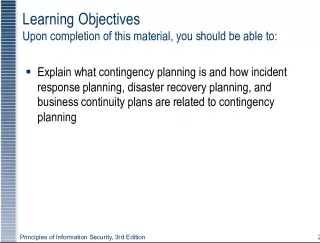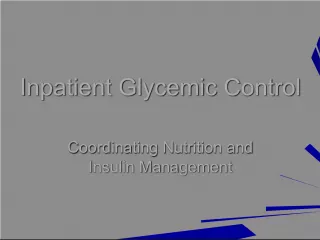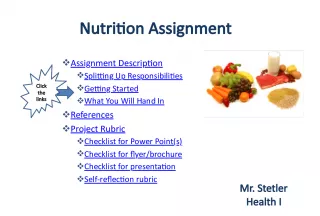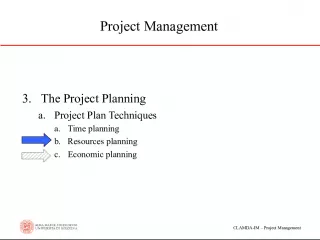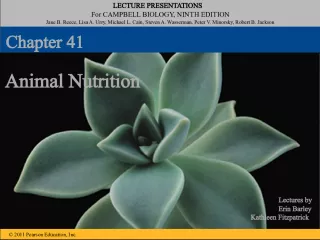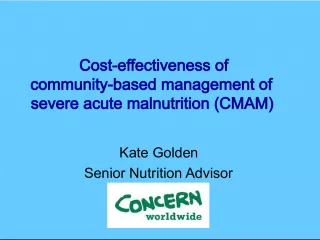Shopping and Meal Planning: The Benefits for Vegetarian Nutrition


Properly planning meals and shopping for ingredients ensures balanced nutrition in vegetarian diets, reducing risk of nutrient deficiencies.
- Uploaded on | 1 Views
-
 veera
veera
About Shopping and Meal Planning: The Benefits for Vegetarian Nutrition
PowerPoint presentation about 'Shopping and Meal Planning: The Benefits for Vegetarian Nutrition'. This presentation describes the topic on Properly planning meals and shopping for ingredients ensures balanced nutrition in vegetarian diets, reducing risk of nutrient deficiencies.. The key topics included in this slideshow are . Download this presentation absolutely free.
Presentation Transcript
Slide11Shopping and Meal Planning
Slide2The Benefits • Ensures proper vegetarian nutrition • Assures balance between major nutrients • Reduces shopping time • Cuts back on cooking time • Saves money 2
Slide3Shopping Tips 101 • Keep a plentiful pantry. • Stick with familiar name brands. • Avoid shopping on an empty stomach. • Shop different stores like the vegetarian/organic foods section of grocery stores, health food stores, co-ops, mail order and online shopping. • Spend the majority of your time in the produce section. Online Resources: • Dixie Diners’ Club: www.dixiediner.com • Frankferd Farms Foods: www.frankferd.com • Fantastic World Foods: www.fantasticfoods.com • Hodgson Mill: www.hodgsonmill.com • Bob’s Red Mill: www.bobsredmill.com 3
Slide4Other Shopping Tips • Buy different colors of fruits and vegetables. • Purchase one new food every time you shop. • Try one or two different vegetables as a side dish, in your salads or stir-fry. • Be adventurous and make one new recipe a week. 4
Slide5More Shopping Tips • Keep fresh herbs, spices, sauces and marinades on-hand to use as flavor enhancers. • Shop for foods that have a variety of textures, temperatures and colors. • Shop from a list. • Clip or download coupons. 5
Slide6Compare Costs 6
Slide7Top 10 List 1. Soy milk 2. Vegetarian burgers and hot dogs 3. Whole-grain breakfast cereals and breads 4. Tofu and tempeh 5. Canned beans, peas and lentils 6. Instant vegetarian soups 7. Whole-grains and whole-wheat pasta 8. Ornish-friendly frozen foods 9. Frozen vegetables and tomato products 10. Dry-roasted soy nuts 7
Slide8Meal Planning Guidelines • Set aside time to plan a week’s menu. • Incorporate quick and easy meals and favorite recipes. • Compile a shopping list the needed meal ingredients. • Begin with the evening meals. • Add foods needed for breakfast and lunch. • Add side dishes and snacks, such as fruits and salads. • Add any staples you may need to restock. – Keep the “Stocking the Kitchen with Ornish-Friendly Food” list on the refrigerator and use it when shopping. – Save menus and shopping lists to reuse in the future. 8
Slide9Reversal Food Pyramid 9
Slide10Basic Meal Planning 101 • Based on the Reversal Food Pyramid – Serves as a simple daily food guide. – Incorporates minimum servings for the major food groups. – Focuses on regular meals and snacks as needed. – Includes foods from 3 or more food groups at each meal. – Assures balance between major nutrients (i.e. carbohydrate balance). 10
Slide11Basic Meal Planning Minimum Daily Servings: • 6 servings whole-grains • 2 fruit servings • 3 vegetable servings • 2 protein servings (1 full-fat soy) Ideal Minimum Daily Servings: • 6+ whole-grain servings • 2 fruit servings • 3 vegetable servings • 4 protein servings (1 full-fat soy) • 1-2 fat-free dairy serving(s) 11
Slide12Basic Meal Planning Ideal Minimum Daily Servings: • 6+ servings whole-grains • 2 fruit servings • 3 vegetable servings • 4 protein servings (1 full-fat soy) • 1-2 fat-free dairy serving(s) Meal Plan Outline: • Breakfast – 2 whole-grain servings – 1 fruit serving – 1 protein serving (full-fat soy) – 1 vegetable serving • Lunch – 2 whole-grain servings – 1 protein serving – 1 vegetable serving • Dinner – 2 whole-grain servings – 1 protein serving – 1 vegetable serving – 1 fat-free dairy serving • Snack – 1 fruit serving – 1 protein serving 12
Slide13Making a Realistic Menu Meal Plan Outline: • Breakfast – 2 whole-grain servings – 1 fruit serving – 1 protein serving (full-fat soy) – 1 vegetable serving • Lunch – 2 whole-grain servings – 1 protein serving – 1 vegetable serving • Dinner – 2 whole-grain servings – 1 protein serving – 1 vegetable serving – 1 fat-free dairy serving • Snack – 1 fruit serving – 1 protein serving Realistic Food Menu: • Breakfast – 1 cup Cheerios – ½ cup fresh berries – 1 cup soy milk – 4 ounces V-8 juice • Lunch – 1 whole-wheat bun – 1 soy burger – 1 cup green salad w/ fat-free dressing • Dinner – 1 cup whole-wheat pasta – ½ cup lentils – ½ cup fat-free tomato sauce – 1 cup skim milk • Snack – ½ cup sliced peaches – 1 cup plain soy yogurt 13
Slide14Let’s Practice… 14
Slide15And Don’t Forget… • You can add as many whole-grains and veggies as you need (as long as you are hungry). • Keep sweets and refined grains to a minimum. • Be creative. • Remember, you still have a vast amount of food choices that you can make. 15




